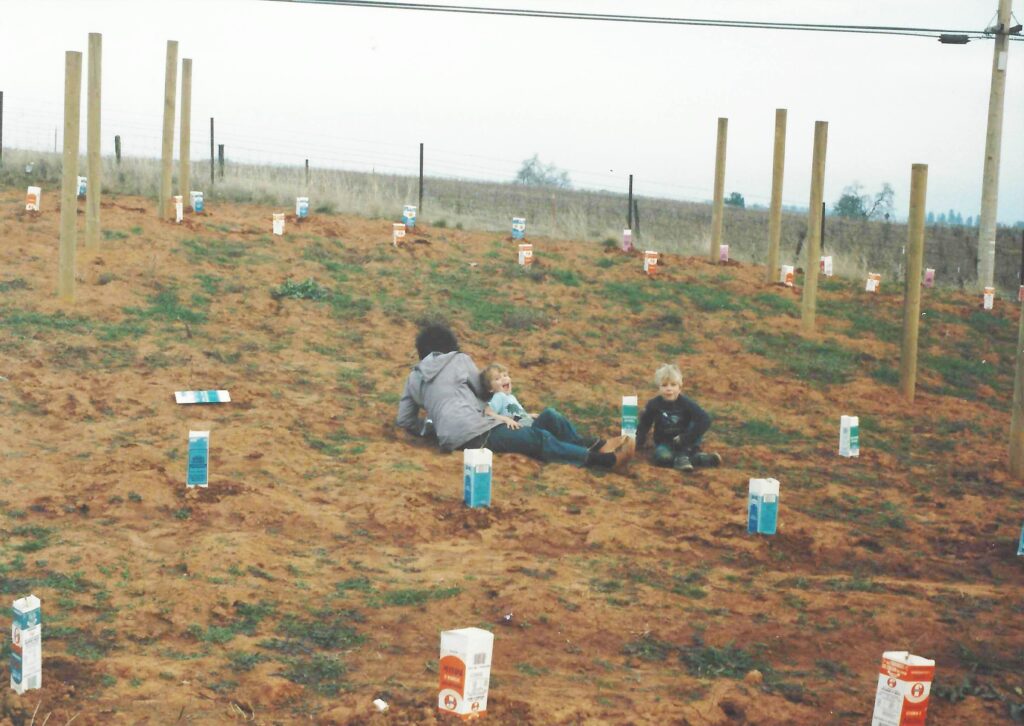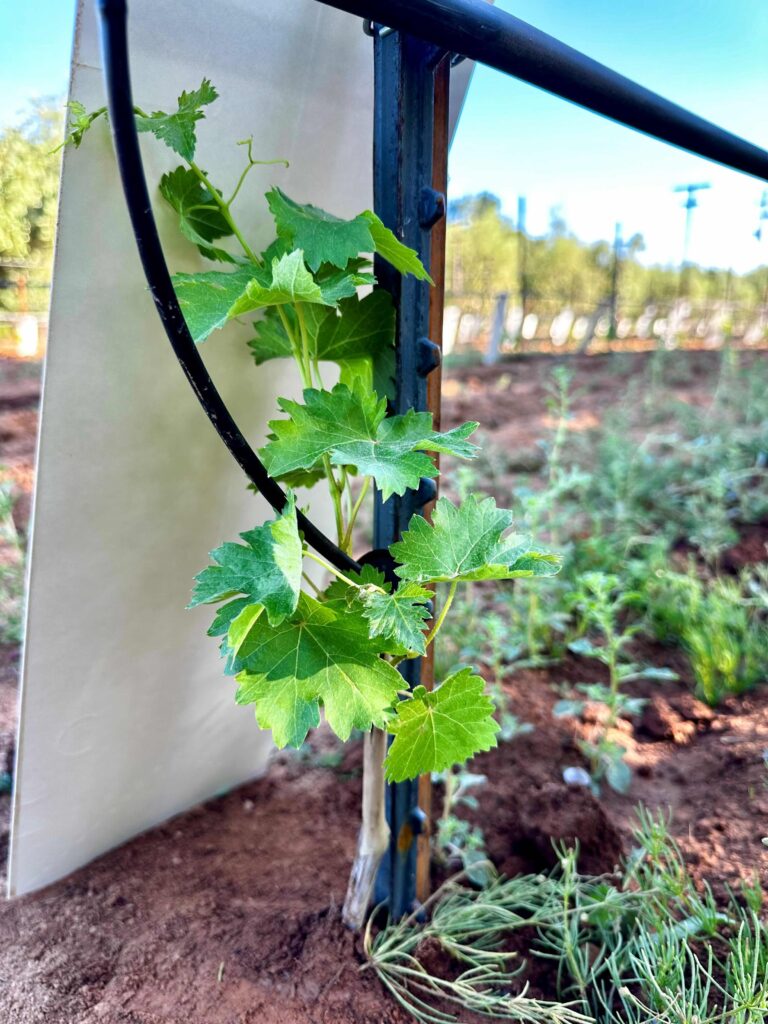Our Vineyard
Where the Magic Starts
Everything starts in the vineyard. Amongst the myriad steps toward producing good wine, the first big strides are always made here. With such importance lying in the vineyard, Jim & Suzy researched and identified numerous critical decisions prior to planting any Sangiovese:
“What grape varietals thrive in the rather warm environs of California’s Shenandoah Valley, nestled against the west slope of the Sierras? Do specific rootstocks and/or trellis configurations consistently yield high quality, varietally accurate fruit year in, year out for several decades? When and to what extent should the vines be irrigated, and when is the fruit optimally ripe for wine?”

Establishing the Vineyard
In the fall of 1984 the Gulletts acquired their first 21 acres. During the following harvest they travelled to Tuscany with their two and four year old sons, where they learned not just how, but why leading Chianti Classico and Brunello producers make their fine wines. They spent entire days on wine estates, looking at vines and tasting ripening grapes, talking with growers and vintners, examining trellis and cultural techniques and tools, and examining the lay of the land.
Upon their return they learned where and how to secure the important cuttings to start their vineyard, which they propagated in tubs and planters at their Lafayette, CA home. They researched new trellising systems to capture the California sun while avoiding sunburnt grapes. They found nurseries with the right rootstocks to throttle Sangiovese’s propensity for excessive production and foliage, and they established a pruning regime to manage each vine to less than ten pounds of fruit — that’s approximately three bottles of wine per vine.
In 1987, the Gulletts acquired an adjacent 18.5 acre parcel with its original 1887 ranch house. That winter, with the help of their friends and family, they planted the first two-thirds of an acre of Sangiovese. Within three years the vineyard had grown to twelve acres. Today, 25 acres of vineyard produce 80-100 tons annually — 95% of the vineyard is comprised of five different clonal selections of Sangiovese; the remaining 5% consists of a few blending grapes for seasoning and the traditional Tuscan varieties used in the Misto Sangiovese — our Chianti Classico inspired field blend.
Vino Noceto is a shining example of what happens when vintners deliberately choose a varietal to plant based on the soil and climate they have at their disposal. Add a heaping passion for Sangiovese and you have the perfect recipe for success.

The Estate Vineyard Blocks
The 24-acre estate Sangiovese vineyard is divided into several vineyard blocks, some of which are designated for limited-production, single-block bottlings.
The Dos Oakies block, planted in 1988, is located on the winery parcel, originally between two oak trees (one fell in a storm several years back). The two trees — one short and stout, the other tall and thin — reminded Jim of the two Okies in an old television commercial for a rather well known winery. This block is planted with a Sangiovese Grosso clone originating from Il Poggione vineyard in Tuscany’s Montalcino region via Montevina. When Montevina replanted their vineyard some years later, they mistakenly removed the original ten ‘Il Poggione’ vines and came back to us for cuttings!
The Hillside block, planted in 1990, is located on Dickson Road across from Terre Rouge Winery, on the hillside portion of the Gullett’s ranch house property. Typically, this selection is harvested from the uppermost southwest portion of the block, where the soils are shallow and rocky. The vineyard is planted with the Sangioveto clone (aka Sangiovese Piccolo), originally sourced from Isole e Olena vineyard in the Chianti region of Italy. The Hillside block is also the fruit source for the Misto Sangiovese.
The Marmellata block is located in the Northeastern corner of the winery parcel, adjacent to Dos Oakies. The vines were originally sourced from Biondi Santi vineyard in Tuscany’s Montalcino region, and were brought into this country in 1987 by Robert Pepi. Jim was college friends with Robert’s son and was able to arrange a trade. Marmellata means “jam” in Italian — a perfect description for the grapes from this block. The fruit is distinctively jammy, with firm tannins and a hint of chocolate, earth, and spice.
The Noce Knoll block consists of nine acres of Sangiovese planted in 1999 on the old walnut orchard section of the winery parcel. Besides more plantings from our original sources, this block contains vines originally sourced from Altesino vineyard in Italy’s Montalcino region plus a true clone of Sangiovese, R19. Of particular interest to us is the Altesino section which produces grapes with distinctive, concentrated Sangiovese flavors, great structure, and firm acids. It is these vines which will form the basis of our ultra-premium AX-1 Sangiovese.
Other Vineyards
In addition to the estate vineyard, Vino Noceto sources Sangiovese grapes from neighboring Reward Ranch. We are always on the lookout for outstanding vineyards which may enhance our Sangiovese wines, and over the past years have experimented with grapes from neighboring Amador County vineyards to other California locations as Paso Robles, Mendocino, Penn Valley, and Hollister.

Amador County Tasting Room
Walk-ins welcome! Come on by for a visit. We’ll bring the wine.
Tasting Room Hours
Weekdays: 11AM – 4PM
Weekends: 11AM – 5PM
11011 Shenandoah Road
Plymouth, CA 95669
Contact Information
Tasting Room: 209.245.6556 X2
Office: 209.245.6556 X4
Text: 209.286.7840
Email: vino@noceto.com